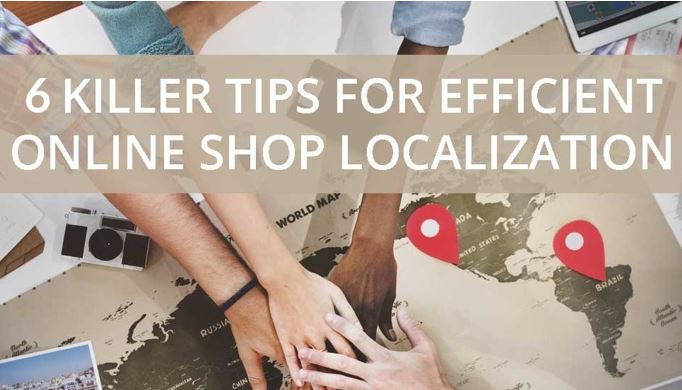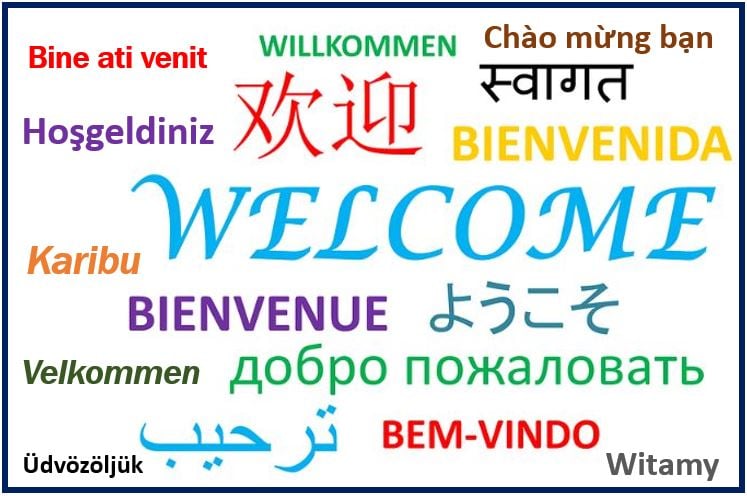 English Websites are used by only one third of the global customer base. It is necessary to tap into other more vibrant potential bases. The world has become a global village and the pace of life is moving faster and faster. Since the advent of the Internet, how we shop, work, study, and play has changed significantly.
English Websites are used by only one third of the global customer base. It is necessary to tap into other more vibrant potential bases. The world has become a global village and the pace of life is moving faster and faster. Since the advent of the Internet, how we shop, work, study, and play has changed significantly.
Shopping, which in the 20th century meant physically leaving your home and entering bricks-and-mortar stores, has given way to online shopping. People can now purchase items from the comfort of their living rooms. E-commerce today is thriving.
In order to be successful in business, it is necessary to have good contact with customers and target consumers. You can only do that if you communicate with them in their language. This is called localization. Two-thirds of the global online customer base, i.e., those whose mother tongue is not English, need to be approached using a solid localization strategy.
How to localize your online store
Research has shown that customers are more likely to buy products if their descriptions and features have been translated into their native language. Having good quality translations in a website is becoming increasingly important.
When translating content, it is important to be sensitive to the cultures of different communities.
Images, content, and product descriptions should be translated into the mother tongue of your target market. How you design that webpage is also important – you need to be aware of target market preferences. Your website designs should also be unique if you want it to be effective and successful.
Some experts say that translating a website into 14 languages is enough. However, if you are really serious about capturing the global market, your should be looking at twenty languages.
 Ways to localize your online Store
Ways to localize your online Store
Perhaps the idea of translating your website into fourteen or twenty different languages horrifies you. However, you will find the results are worth it. Here are some tips regarding localizing your website:
1) Analysis of online data
Customer’s preferences and the target language can be checked using online data and consumer behavior analysis. Knowing customers’ preferences crucial for effective localization.
2) Laws to take your business international
You need to make sure that your localized website adheres to local rules and regulations. These might not be the same as the regulations you are used to.
System Security
System Security addresses such concerns as:
- System Control and Privacy.
- System Control through audit trial.
Privacy is a legislated right of individuals whose personal data is on Internet. System security and privacy laws are essential in e-commerce. These laws dictate how people’s information can and cannot be used. The privacy policy contains:
- The knowhow of the business
- Details of information collected.
- How the information is gathered.
- How it is stored.
- How it will be used.
3) Market Research
We live in an era of globalization and digitalization. Digital marketing plays a vital role in attracting potential customers. Through marketing research, consumers;’ buying patterns and preferences in specific markets can be understood. All the data we gather from such research can help when we are localizing a website.
How to prioritize data
You should prioritize the following data first:
Languages
Clearly, the language you use must be the consumer’s mother tongue. If it is not, there will be very little interest in your website.
Currency and Payments
Most consumers would much rather buy things in their own currency rather than a foreign one. People don’t like having to look up exchange rates. Bear in mind that consumers in one country might have different payment preferences from those in another. The payment methods you offer must be the most popular ones in your target market.
Design
Neutral colors and design should be used to attract customers. Remember that colors are not all used in the same way worldwide. In some countries, certain colors have specific meanings. It is important that the colors you use match the preferences and culture of your consumers.
Website image
If consumers are welcomed to your website in their native language, they will have a good first impression. First impressions in the marketplace really matter.
4) Customers Reviews
Seventy percent of people read customer’s reviews before deciding whether to purchase something. Sixty-three percent of customers buy products because of positive reviews. Consumers will like your online store if customer reviews are in their native language.
5) Localized Apps
A growing number of people are purchasing products online using their smartphones. Your website must be specifically designed for smartphone use. IOS and Android app localization will help you penetrate the target market more effectively.
6) Getting Translations done by a Professional Translation Company
The best way to localize your store is to hire a translation agency which employs certified native linguists. They can help you localize your store so that you can penetrate target markets successfully.

